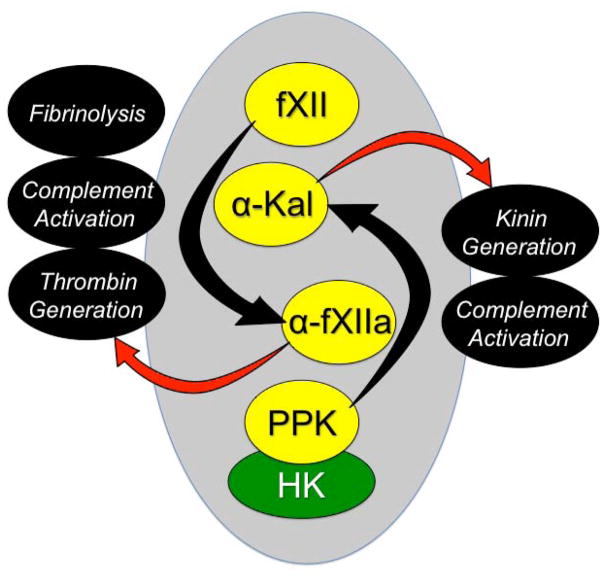Figure 1. Contact Activation.
On a surface (represented by the gray oval), factor XII (fXII) undergoes autocatalytic conversion to the protease α-fXIIa, which in turn converts plasma prekallikrein (PPK) to the protease α-kallikrein (α-Kal). High molecular weight kininogen (HK) serves as a cofactor for contact activation by facilitation the interaction between PPK and the surface. Through their proteolytic capacities, α-fXIIa and α-kal can influence a number of host-defense systems (shown in black ovals). α-FXIIa promotes thrombin generation through conversion of factor XI to factor XIa. α-Kal can promote inflammation by cleaving HK to liberate the nanopeptide bradykinin.

